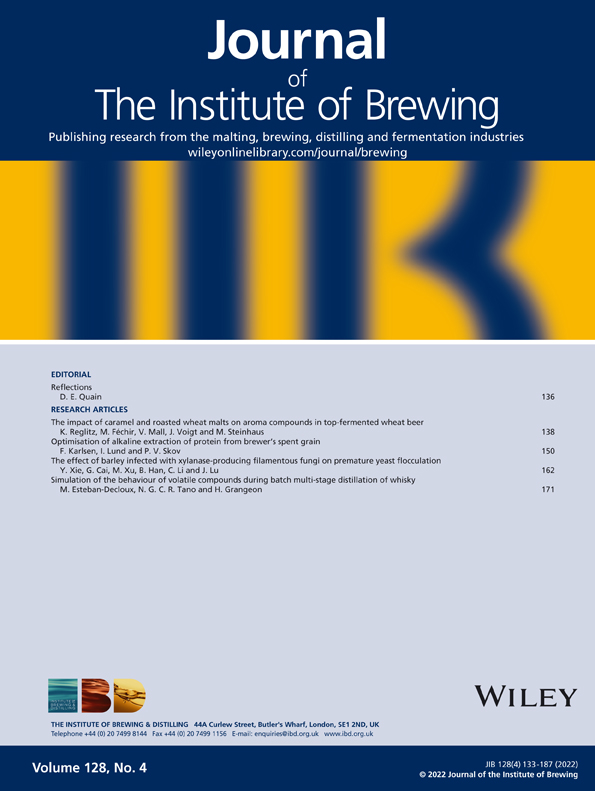MODIFICATION IN MALTING BARLEY
Abstract
The patterns and degrees of modification found in the same grains, by successively applying the Calcofluor and Methylene Blue techniques, while similar were not identical. The Methylene Blue technique over-estimated modification in short-grown grains because the dye spread around the sheaf-cells, into cracks, and into mealy regions of the starchy endosperm. Calcofluor gave slightly higher modification scores in more completely modified grains. Reasons for the discrepancies are suggested.
Differences in staining indicate that the nature of endosperm degradation caused by enzymes from the scutellum is different to that caused by enzymes from the aleurone layer. Sometimes patches of unmodified endosperm tissue occured adjacent to the aleurone layer between the zones of modification caused by the two groups of enzymes.
Modification sometimes extended around cracks in the starchy endosperm. Various patterns of modification were detected. Other patterns indicate that the aleurone sometimes more or less fails to generate wall-degrading enzymes.
Both light and scanning-electron microscopy indicated that cell walls of the starchy endosperm become fragmentary, and were totally degraded in completely modified regions.




